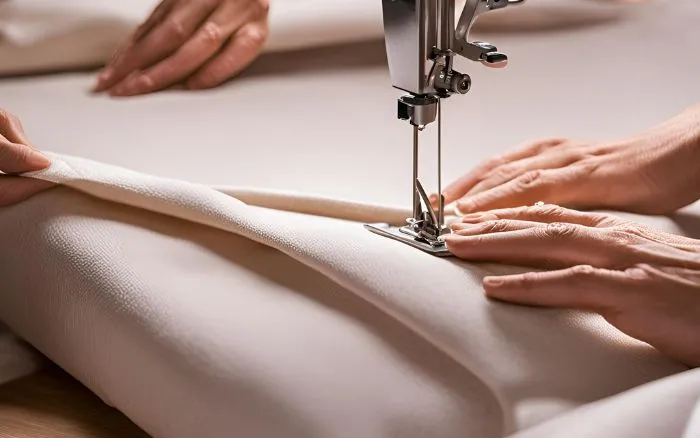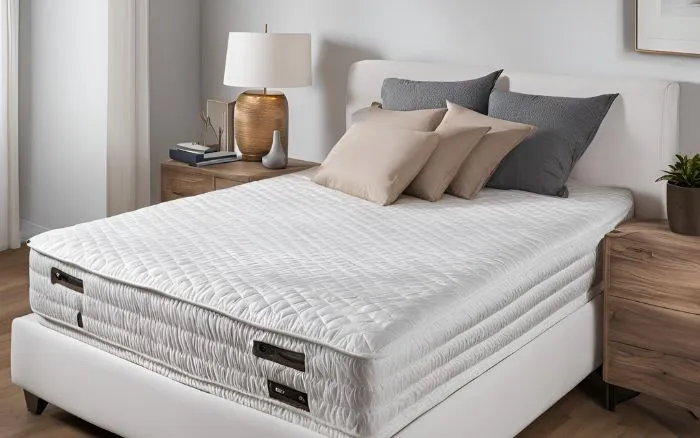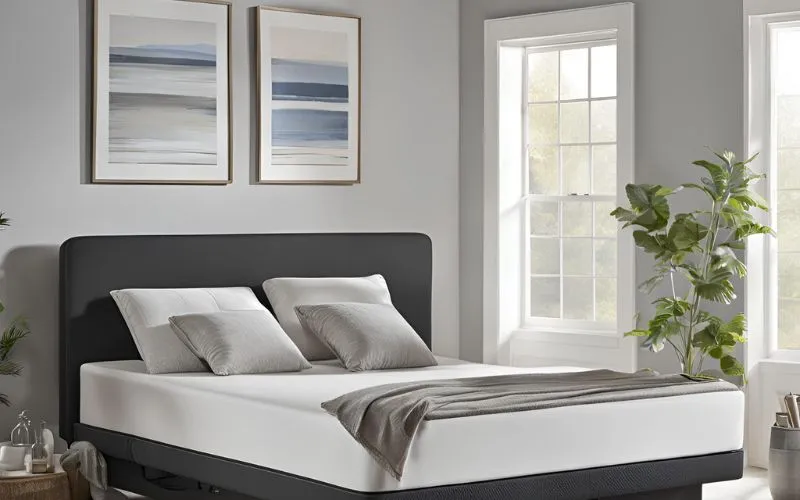How Pressure-Relieving Mattresses Improve Sleep Quality

Introduction
When it comes to getting a good night’s sleep, the right mattress can make all the difference. In recent years, pressure-relieving mattresses have gained popularity for their ability to provide comfort and support, especially for those with specific health concerns. In this comprehensive guide, we will explore the benefits of pressure-relieving mattresses, how to choose the right one, and tips for improving sleep quality with these innovative mattresses.
What are Pressure-Relieving Mattresses?
Understanding Pressure Points
Pressure-relieving mattresses are specially designed to alleviate pressure points on the body, thereby reducing discomfort and promoting better sleep quality. By evenly distributing body weight and providing support to key areas such as the hips, shoulders, and spine, these mattresses help prevent the development of pressure sores and relieve pain associated with prolonged bed rest.
Types of Pressure-Relieving Mattresses
Pressure-relieving mattresses come in various types, each designed to address specific needs and preferences. Let’s explore each type in greater detail:
- Memory Foam Mattresses: These mattresses are renowned for their ability to conform to the body’s shape, providing personalized support and effectively relieving pressure points. They are particularly beneficial for individuals with chronic pain conditions.
- Gel-Infused Mattresses: Gel-infused mattresses offer advanced cooling properties, making them ideal for individuals who tend to sleep hot. The cooling gel helps dissipate body heat, ensuring a comfortable sleeping environment.
- Airbeds: Airbeds, equipped with adjustable air chambers, allow users to customize the firmness according to their comfort preferences. This feature makes them suitable for individuals with varying support needs.
- Adjustable Firmness Mattresses: These mattresses enable users to adjust the level of firmness, catering to individual preferences at different times. They are highly versatile and can be adapted to meet changing comfort requirements.
Benefits of Pressure-Relieving Mattresses
Improved Blood Circulation
One of the key benefits of pressure-relieving mattresses is the improvement of blood circulation. By reducing pressure on specific areas of the body, these mattresses facilitate better blood flow, which can be especially beneficial for individuals with circulatory issues or those who are prone to developing pressure ulcers.
Here are some additional points to consider:
- Pressure-relieving mattresses help distribute body weight more evenly, reducing the risk of restricted blood flow.
- Improved blood circulation contributes to better oxygen and nutrient delivery to all parts of the body, promoting overall health and healing.
- For individuals with diabetes, improved blood circulation aids in preventing complications related to poor circulation, such as diabetic neuropathy and foot ulcers.
Reduced Pain and Discomfort
Pressure-relieving mattresses work to reduce pain and discomfort by lessening the strain on pressure points, muscles, and joints. This can provide relief for individuals with chronic pain conditions such as arthritis, fibromyalgia, or back pain, allowing for a more restful and rejuvenating sleep experience.
Balanced Body Support and Alignment
When it comes to balanced body support and alignment, pressure-relieving mattresses play a crucial role in ensuring that individuals experience optimal comfort and health benefits while they sleep. Let’s delve deeper into the ways in which these mattresses contribute to balanced body support and alignment:
- Spinal Alignment: Pressure-relieving mattresses are designed to contour to the body’s natural curves, providing support to the spine and promoting proper alignment. This helps alleviate pressure points and reduces the likelihood of developing spinal issues.
- Muscle Relaxation: By evenly distributing body weight, these mattresses help relax muscles and prevent tension buildup, thereby contributing to improved body alignment and posture.
- Joint Support: The supportive nature of pressure-relieving mattresses extends to the joints, ensuring that they are properly cushioned and aligned during sleep. This can significantly reduce the risk of joint discomfort and stiffness upon waking.
- Enhanced Circulation: Proper alignment facilitated by pressure-relieving mattresses can improve blood circulation, preventing cramping and promoting overall vascular health.
- Long-Term Benefits: Consistently sleeping on a pressure-relieving mattress can lead to sustained improvements in body support and alignment, resulting in reduced aches, pains, and long-term musculoskeletal health.
By prioritizing balanced body support and alignment, individuals can wake up feeling refreshed, rejuvenated, and ready to tackle the day ahead, thanks to the positive impact of pressure-relieving mattresses.
Choosing the Right Pressure-Relieving Mattress
Factors to Consider
When it comes to selecting a pressure-relieving mattress, there are several important factors to take into consideration to ensure optimal comfort and support. Understanding these factors can help individuals make an informed decision that caters to their unique needs and preferences.
- Firmness Levels: Different individuals have varying needs when it comes to the firmness of a mattress. Factors such as body weight, sleeping position, and personal preference all play a role in determining the ideal firmness level.
- Material Composition: The materials used in a pressure-relieving mattress can significantly impact its performance. For instance, memory foam mattresses contour to the body, while latex mattresses provide a buoyant, supportive feel.
- Sleeping Preferences: Individual sleep habits and preferences, such as whether one tends to sleep on their side, back, or stomach, can influence the choice of a suitable mattress.
- Body Weight Considerations: A person’s weight can affect how a mattress feels and performs. Heavier individuals may require a mattress with more support, while lighter individuals may prefer a softer feel.
- Health Conditions: Specific health conditions, such as back pain or arthritis, should be taken into account when selecting a pressure-relieving mattress. Certain mattress features, such as targeted support for pressure points, may be beneficial for addressing these conditions.
Trial Periods and Return Policies
Many reputable manufacturers offer trial periods and generous return policies for their pressure-relieving mattresses, allowing customers to test the mattress and assess its suitability. Prior to purchase, it’s beneficial to inquire about these options to ensure confidence in the chosen mattress and guarantee a satisfactory investment.
Mattress Maintenance Tips
- Regular Rotation: Rotating your mattress every 3 months ensures even wear and prevents body impressions.
- Adequate Support: Ensure that your mattress is supported by a sturdy foundation or box spring to maintain its structural integrity and prevent sagging.
- Use of Mattress Protectors: Invest in high-quality mattress protectors to shield against spills, stains, and allergens, thereby extending the lifespan of your mattress.
- Cleaning and Maintenance Schedule: Follow a regular cleaning and maintenance schedule to keep your mattress fresh, clean, and free of dust mites.
- Air Circulation: Allow your mattress to breathe by regularly removing bedding and letting it air out, which helps prevent moisture buildup and mold growth.
Tips for Improving Sleep Quality with Pressure-Relieving Mattresses
Optimal Sleeping Positions
Optimizing sleep quality with a pressure-relieving mattress involves identifying and adopting the most suitable sleeping positions. Whether it’s back, side, or stomach sleeping, the right mattress, and ideal pillow support can significantly enhance comfort and aid in alleviating pressure points.
- Back Sleeping: Sleeping on your back is considered one of the best sleeping positions for spinal alignment and overall health. It allows the mattress to support the natural curves of your spine, reducing pressure on your body.
- Side Sleeping: Many people find sleeping on their side comfortable. It’s important to use a supportive pillow to keep your head, neck, and spine in alignment. This position can help reduce snoring and alleviate acid reflux symptoms.
- Stomach Sleeping: While stomach sleeping is not generally recommended due to the strain it can put on the neck and back, some people prefer it. If you choose to sleep on your stomach, consider using a thin pillow or no pillow at all to reduce strain on your neck.
Furthermore, adjusting your sleeping position may help with specific health conditions. For example, sleeping on your side can be beneficial for those with sleep apnea, while back sleeping may aid in minimizing joint pain. It’s essential to find the most comfortable and supportive position to promote a restful and rejuvenating sleep experience.
Using Supportive Pillows and Accessories
Using Supportive Pillows and Accessories
- Pairing a pressure-relieving mattress with supportive pillows and accessories can further elevate sleep quality.
- Supportive pillows are designed to align the neck and spine, providing optimal comfort and reducing the risk of neck pain.
- Accessories such as adjustable bed bases allow for customized positioning, enhancing overall sleep comfort and addressing individual preferences.
- Specialized pillows, such as memory foam, latex, or cervical pillows, offer personalized support for different sleep needs.
- Using a knee pillow between the knees while sleeping on the side can help maintain proper spinal alignment and alleviate pressure on the hips and lower back.
Importance of Regular Mattress Inspection
Regular inspection of the pressure-relieving mattress is vital to ensure its ongoing effectiveness. To enhance the content further, let’s delve into more detailed points about the importance of regular mattress inspection:
- Identifying Signs of Wear: Regular inspection allows for the early identification of wear and tear on the mattress surface, such as indentations or sagging, which can affect its pressure-relieving capabilities.
- Maintaining Cleanliness: Apart from routine cleaning, regular inspection ensures that any spills or stains are promptly addressed, preventing the buildup of allergens and bacteria that could compromise sleep hygiene.
- Assessing Support Levels: Through regular evaluation, it’s possible to gauge the ongoing support provided by the mattress to maintain optimal spinal alignment and pressure distribution.
- Monitoring Material Deterioration: Inspecting the mattress regularly allows for the monitoring of material integrity, ensuring that the pressure-relieving properties remain effective over time.
By incorporating these detailed points into the regular mattress inspection process, individuals can prolong the mattress’s performance and preserve sleep quality effectively.
Conclusion
Pressure-relieving mattresses offer a host of benefits for individuals seeking enhanced comfort, support, and improved sleep quality. By understanding the significance of these mattresses, making informed choices, and implementing effective sleep practices, individuals can experience the transformative impact of pressure-relieving mattresses on their overall well-being and sleep satisfaction.




